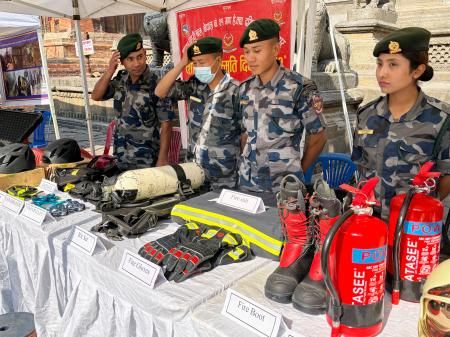Nepal Earthquake: Disaster Preparedness – A Crucial Lesson Learned
The devastating Nepal earthquake of 2015, which measured 7.8 on the Richter scale, serves as a stark reminder of the importance of disaster preparedness. The earthquake caused widespread destruction, claiming thousands of lives and leaving countless others injured and homeless. While the immediate aftermath saw a global outpouring of aid and support, the long-term recovery highlighted the critical need for robust disaster preparedness strategies, not just in Nepal, but worldwide. This article delves into the lessons learned from the Nepal earthquake and emphasizes the crucial role of preparedness in mitigating future disasters.
The Devastating Impact of the 2015 Earthquake
The April 25th, 2015, earthquake and its subsequent aftershocks caused catastrophic damage to Nepal's infrastructure. Entire villages were reduced to rubble, hospitals were overwhelmed, and communication networks collapsed. The death toll was staggering, and the economic consequences were profound, setting back the nation's development significantly.
Key Impacts:
- Massive Loss of Life: Thousands perished, with many more injured. The lack of preparedness exacerbated the casualties.
- Infrastructure Collapse: Homes, schools, hospitals, and critical infrastructure were destroyed, leaving millions displaced.
- Economic Devastation: The earthquake crippled Nepal's economy, impacting tourism, agriculture, and other vital sectors.
- Social Disruption: Families were separated, communities were shattered, and the social fabric of the nation was significantly strained.
The Urgent Need for Disaster Preparedness
The Nepal earthquake exposed critical gaps in disaster preparedness. While Nepal is situated in a seismically active zone, its preparedness measures were inadequate. The lack of building codes, insufficient early warning systems, and limited community-level preparedness contributed to the scale of the devastation.
Key Areas for Improvement:
- Strengthening Building Codes & Infrastructure: Implementing and enforcing stringent building codes designed to withstand seismic activity is paramount. Retrofitting existing structures is equally important.
- Developing Robust Early Warning Systems: Investing in advanced early warning systems, including seismic monitoring and public alert mechanisms, is crucial for providing timely warnings.
- Improving Community Preparedness: Educating communities about earthquake preparedness, including evacuation plans, first aid, and emergency communication strategies, is essential.
- Stockpiling Relief Supplies: Maintaining sufficient stockpiles of essential relief supplies, including food, water, medical equipment, and shelter materials, is vital for effective response.
- Strengthening Emergency Response Capabilities: Investing in training and equipping emergency response teams, including search and rescue units, medical personnel, and logistics teams, is crucial for efficient disaster response.
Lessons Learned and the Path Forward
The Nepal earthquake provided invaluable lessons about disaster preparedness. It highlighted the need for a multi-faceted approach that integrates government policies, community involvement, and international collaboration. Investing in resilient infrastructure, strengthening community resilience, and fostering international cooperation are vital for minimizing the impact of future disasters.
Moving Forward:
- International Collaboration: Sharing best practices and knowledge, providing financial and technical assistance, and fostering international collaboration are crucial for improving global disaster preparedness.
- Technological Advancements: Utilizing technology, such as satellite imagery, GIS mapping, and mobile communication, can significantly enhance disaster response and recovery efforts.
- Community-Based Disaster Risk Reduction: Empowering local communities to participate actively in disaster preparedness and response efforts is crucial for sustainable resilience.
- Post-Disaster Reconstruction: Prioritizing safe and resilient reconstruction is vital to avoid repeating the mistakes of the past. Sustainable development practices are crucial for long-term recovery.
Conclusion: Preparedness is Prevention
The Nepal earthquake serves as a sobering reminder of the devastating consequences of inadequate disaster preparedness. By learning from the past and investing in robust preparedness strategies, we can significantly reduce the risk and impact of future disasters. Investing in preparedness is not just about saving lives; it's about building resilient communities and fostering sustainable development. Let the tragedy of Nepal serve as a catalyst for global action on disaster preparedness. Learn more about disaster preparedness resources from [link to a relevant organization, e.g., the Red Cross].
